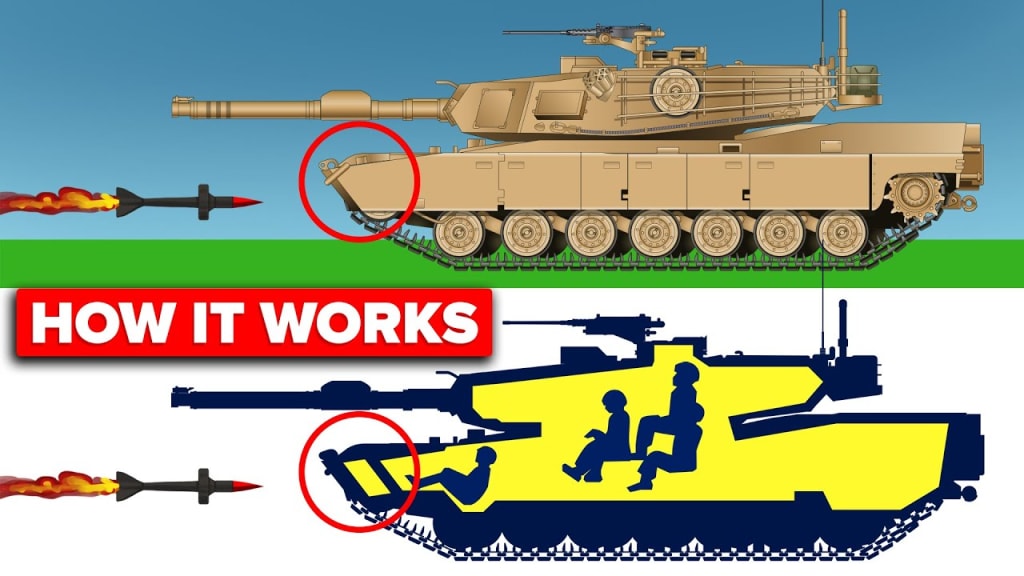How does the armor on a tank provide protection?
War Machine | Infographics Show

Tank armor has come a long way since these armored behemoths first rumbled onto the battlefield in World War I. From those early riveted steel plates to today's advanced composite materials and active protection systems, the history of tank armor development has been an ongoing race to create better protection against ever-deadlier threats. Let's dive into the fascinating evolution of tank armor and explore how it works to keep crews safe in the face of enemy fire.
The Birth of Tank Armor
When tanks first appeared in World War I, they were little more than mobile fortresses covered in thin, vertical steel plates. These early designs could stop rifle rounds and shell fragments, but not much else. As anti-tank weapons improved, it became clear that tank armor needed to evolve to survive on the modern battlefield.
World War II Advancements
During World War II, tank armor saw significant improvements:
- Thicker plates, especially on heavy tanks like the German Tiger II.
- Sloped armor to increase effective thickness and deflect shots.
- Cast steel hulls for better structural integrity.
- Welded construction replaced rivets, eliminating weak spots.
However, even these advancements struggled against new high-velocity guns firing armor-piercing rounds. The race between tank armor and anti-tank weapons was just getting started.
Cold War Breakthroughs
The Cold War saw an explosion of innovation as the U.S. and Soviet Union competed to create the ultimate tank. The most significant development was the introduction of composite armor:
- British Chobham armor used layers of steel, ceramics, and secret materials.
- Soviet composite armor featured unique combinations of steel, ceramics, and plastics.
- Composite armor was much more effective against shaped-charge warheads and kinetic energy penetrators.
The Soviets also pioneered reactive armor - explosive tiles that detonated outward to disrupt incoming projectiles before they could penetrate the main armor.
Modern Armor Systems
Today's tanks employ a variety of cutting-edge armor technologies to protect their crews:
- Advanced composites with optimized layouts and lightweight materials.
- Reactive armor with improved explosives and coverage.
- Sloped and angled surfaces to deflect rounds and increase effective thickness.
- Cage or slat armor to detonate shaped charges and RPGs prematurely.
- Active protection systems that detect and shoot down incoming missiles.
These systems work together to provide comprehensive protection against a wide range of threats.
The Science Behind Tank Armor
So, how does modern tank armor actually stop enemy fire? It's a complex interplay of material properties, physics, and clever engineering.
When a projectile strikes composite armor, several things happen in rapid succession:
- The hard, brittle ceramic layer shatters, absorbing energy and breaking up the projectile.
- The tough, elastic backing layer catches any remaining fragments and absorbs residual energy.
- Angled surfaces deflect or redirect the projectile, reducing its effectiveness.
Reactive armor adds another layer of protection. When a shaped charge or projectile strikes a reactive tile, the explosives detonate outward, disrupting the incoming threat and preventing penetration.
Active protection systems take things even further, using radar and infrared sensors to detect incoming missiles and rockets. Once a threat is identified, the system launches countermeasures to destroy or divert the projectile before it reaches the tank.
The Future of Tank Armor
Despite all these advancements, tank armor is far from invincible. In Ukraine, Russian tanks have been devastated by modern top-attack weapons like the Javelin, which strike the thin top armor and cause catastrophic ammo explosions. The Russians have resorted to improvised solutions like "cope cages" over their turrets, but these have had limited success.
As anti-tank weapons continue to evolve, so too must tank armor. Some of the most promising developments on the horizon include:
- Electromagnetic armor that uses powerful magnetic fields to disrupt incoming projectiles.
- Reactive armor with advanced sensors and directed explosives for improved coverage and effectiveness.
- Active camouflage systems that use cameras and displays to blend the tank into its surroundings.
- Unmanned turrets and remote crew stations to keep personnel safely inside the hull.
While the future of tank warfare is uncertain, one thing is clear - the race between offensive and defensive technologies is far from over.
The Unending Evolution of Tank Protection
From the first lumbering steel beasts of World War I to the sleek, high-tech machines of today, tank armor has undergone a remarkable transformation. Each new advancement is a testament to human ingenuity and the unwavering dedication to protecting the brave men and women who operate these incredible machines.
As long as there are threats on the battlefield, there will be a need for better, stronger, and smarter tank armor. The story of tank protection is one of constant evolution and adaptation, a never-ending quest to stay one step ahead of the enemy. It is a story that has shaped the course of history and will continue to do so for generations to come.
About the Creator
Infographics Show
Infographics Show is made up of a group of creative and passionate writers who love to share information in a visual and engaging way.
Reader insights
Outstanding
Excellent work. Looking forward to reading more!
Top insights
Compelling and original writing
Creative use of language & vocab
Easy to read and follow
Well-structured & engaging content
Excellent storytelling
Original narrative & well developed characters
Expert insights and opinions
Arguments were carefully researched and presented
Eye opening
Niche topic & fresh perspectives
Masterful proofreading
Zero grammar & spelling mistakes
On-point and relevant
Writing reflected the title & theme






Comments
There are no comments for this story
Be the first to respond and start the conversation.